On a scale of 1-10,
how cool are you about
having a
Concentrated Natural Gas
Decompression Plant
on the
Creighton Rd. in Malone?
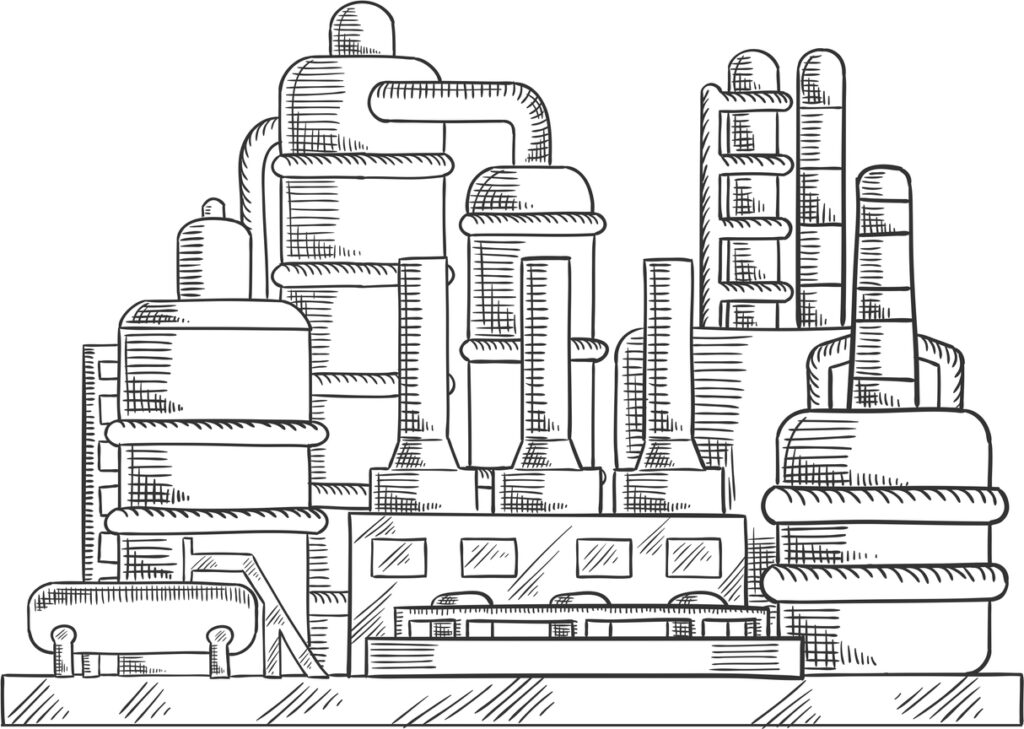

Calvin Luther Martin, PhD
April 12, 2023
Maybe I should put it this way. How cool are you about a big explosion (large fireball followed by thick black toxic smoke) at this location on the Creighton Rd — upwind from the Village of Malone? (See the mushroom cloud, below.)

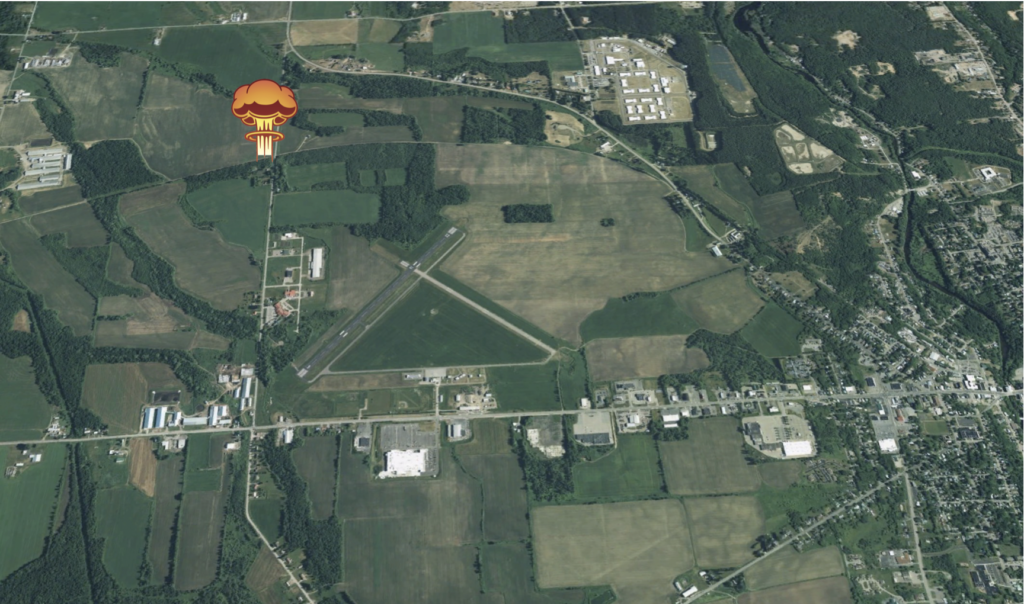
nearly sneaked this outrage by the Malone Town board
- 1
First of all, who and what is Liberty Utilities? They’re a liquid natural gas (LNG) delivery company that turned up in Malone several years ago. Do you remember the St. Lawrence Gas (SLG) company? When SLG went bankrupt, Liberty bought it out, which means, among other things, that Liberty took on SLG’s multimillion-dollar debt.
I published an article on Liberty three years ago. Click on the image to the right to read it.
Liberty had to get permission from the NYS Public Service Commission (PSC) to take over SLG and provide service throughout this region. One of the tasks the PSC performs is to regulate the rates that utilities like Liberty can charge their customers.
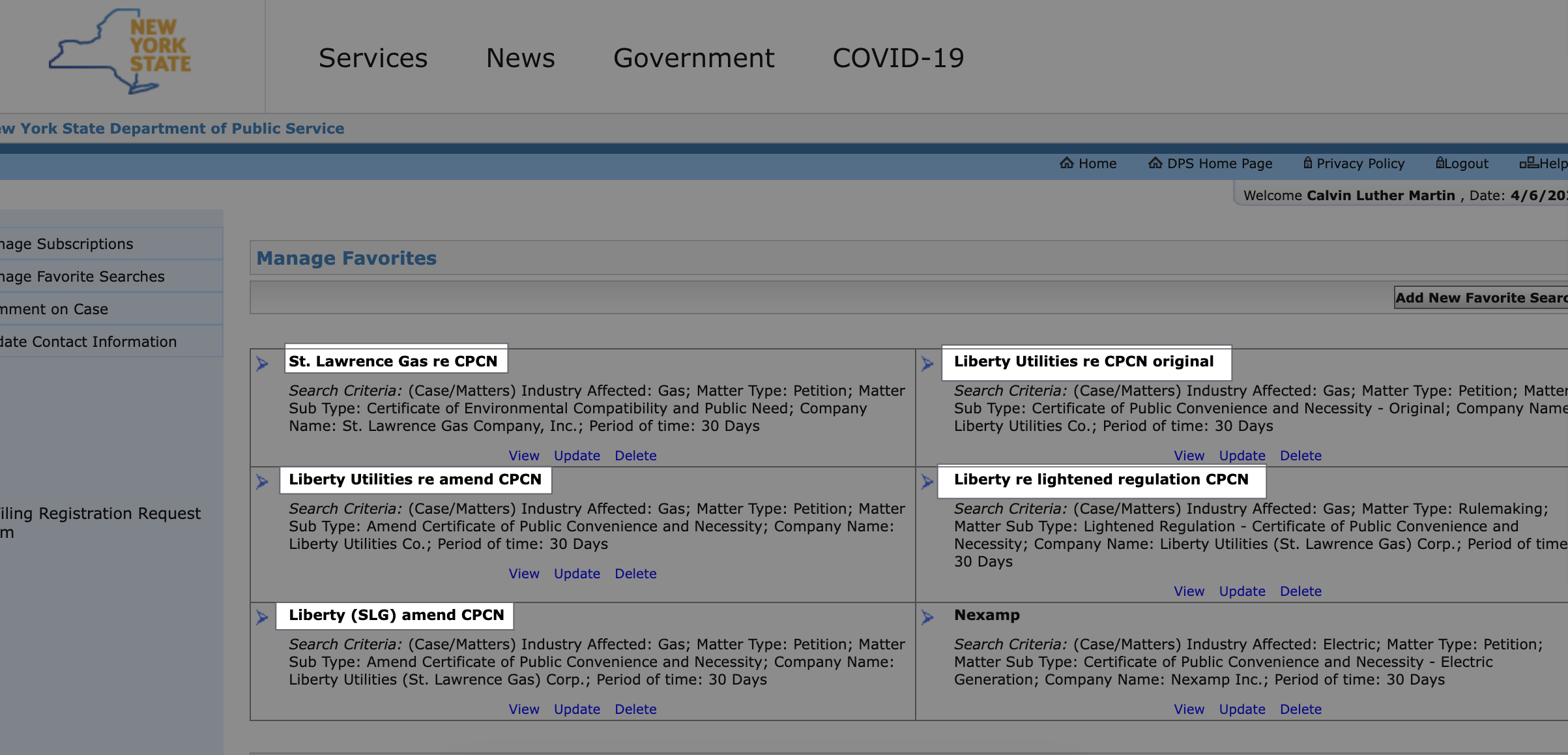
Liberty’s request to the PSC is ongoing. In other words, Liberty is still on what is basically a probationary status with the PSC while the PSC decides whether to issue Liberty a Certificate of Public Convenience and Necessity (CPCN). I am a party to these cases. See the image, to the left, from the Dept. of Public Service Matter Master site. (Mouse-over the image to zoom in.)
- 2
The Town Board answered my question — “Can we trust these people?” — in the affirmative. On February 18, 2020, Supervisor Andrea Stewart wrote to Liberty, enthusiastically welcoming them to Malone.
- 3
Then, Liberty pulled a fast one. Sometime early last summer, Liberty approached the town code officer, Mike McMahon, inquiring if they needed a permit to build — and here is where things get murky — some kind of methane gas processing plant on the Creighton Road.
I have seen only one side of that conversation, from Liberty’s attorney (a piece of work in his own right) who claims that Liberty “submitted plans for a pre-application review on July 5, 2022. At that time the Town Building Inspector advised applicant that no municipal permits or approvals would be required due to the nature of the project” (see Figure 1: Harris to Town of Malone, below).
What, exactly, was “the nature of the project”? This is the million-dollar question. It seems the code officer came away from the conversation thinking that Liberty wanted permission to install a cow manure lagoon with apparatus attached to capture the methane gas — the whole shebang being called a “methane digester.” Presumably the idea was to turn the the vast quantities of cow manure from the Carsada CAFO (Concentrated Animal Feeding Operation) on Route 11 into combustible methane.
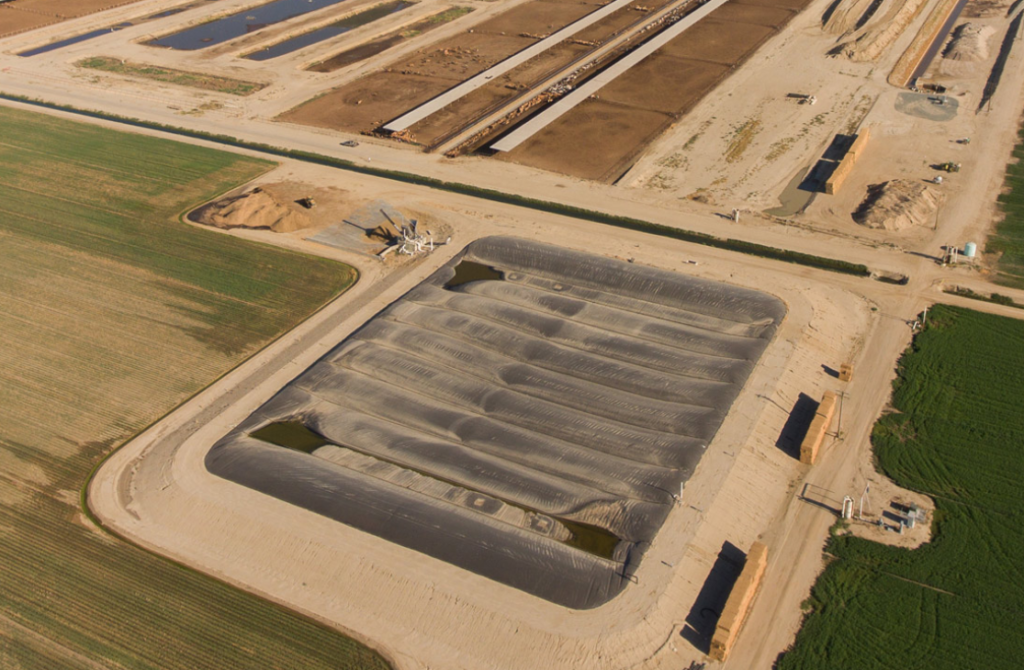
As an aside, the Institute for Agriculture & Trade Policy writes that the “use of digesters to capture and produce manure-based gas, best understood as factory farm gas, is opposed by many rural communities because of the residual air and water pollution associated with these operations. More recent evidence suggests factory farm gas is fueling consolidation in the dairy industry and incentivizing large-scale operations to produce more manure and ultimately new emissions. Five senators recently wrote the U.S. EPA and USDA calling for limits in using incentives to support methane digesters on large-scale animal operations” (click here for source).
Interpreting the code officer’s response as a green light, Liberty “commenced the sitework and anticipate[d] completing the project by the end of March 2023” (see Figure 1: Harris to Town of Malone, below).
- 4

Sometime between July 2022 and March 2023, the Malone town board and code officer realized they had been hoodwinked.
Town supervisor Andy Stewart, I gather, contacted an attorney to inform Liberty that it was going to have to put the project on hold while the town deliberated on how to regulate whatever it is that Liberty wants to build.
- 5
According to an article published in the Telegram on March 9, the town seems to think that Liberty is building a methane digester, as I described above. Notice Andy’s interview with the Telegram:
“We have a company in Malone that is looking to tap into the Liberty Gas utility line with a methane producing digester.”
- 6
Andy, it’s not a methane digester it’s a methane decompressor. The difference is huge.
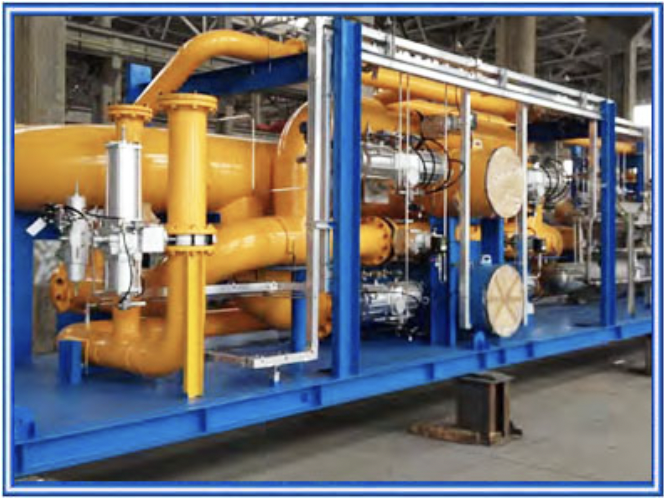


This is what they propose to install! What you’re looking at are 3 different calibers of methane decompressors.
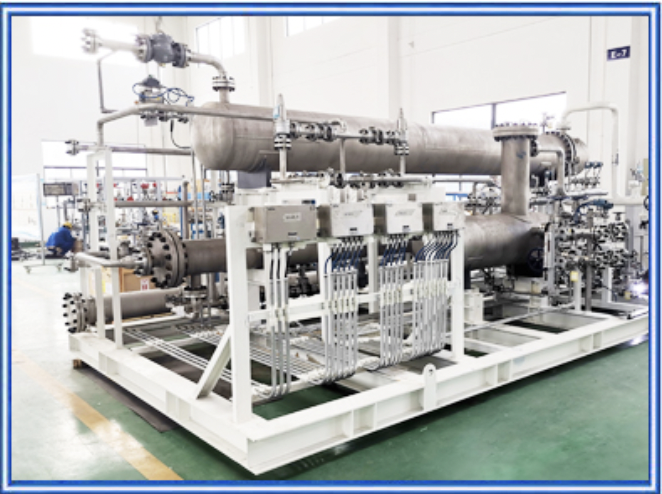
Liberty’s attorney, Javid Afzali, explains this in his letter below (Fig. 1: Harris to Town of Malone). See the section highlighted in yellow by me. Notice that Liberty explicitly says it “does not intend to erect any digesters” (see my green highlighting).
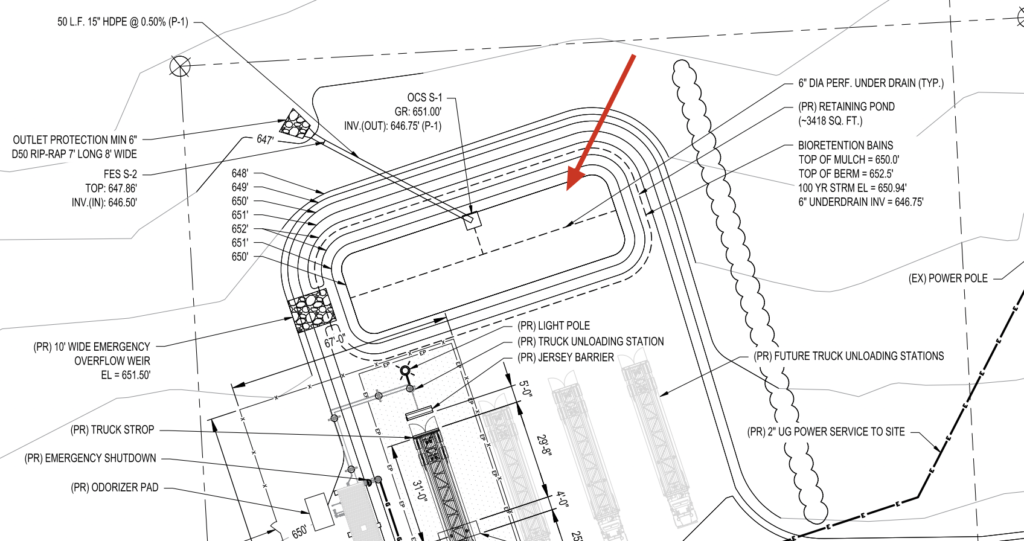
On the other hand, if you look at the schematic drawing of the project on p. 7 of Afzali’s letter (see above), you will see a “retaining pond” (note the red arrow). I suspect this so-called retaining pond is a ruse to mislead us, for I can assure you that decompression plants do not use retaining ponds. I suspect Liberty added the pond to the blueprint to pretend it is going to install a cow manure lagoon to “harvest” methane gas from the abundant cowshit in Franklin County — thus diverting our attention from what is really going on.
By the way, all of the DEC permits which Liberty has been collecting, and Afzali refers to in his letter, have to do with runoff from this collecting pond — presumably runoff from a cow manure lagoon, which Afzali says they are not going to build. Methane gas decompression plants, as I say, don’t need collection ponds and they certainly don’t need DEC permits for water runoff.

It’s conceivable that sometime in the future Liberty may get into the “cowshit” business, but this is not what it’s planning at the moment.
Figure 1: Harris to Town of Malone.

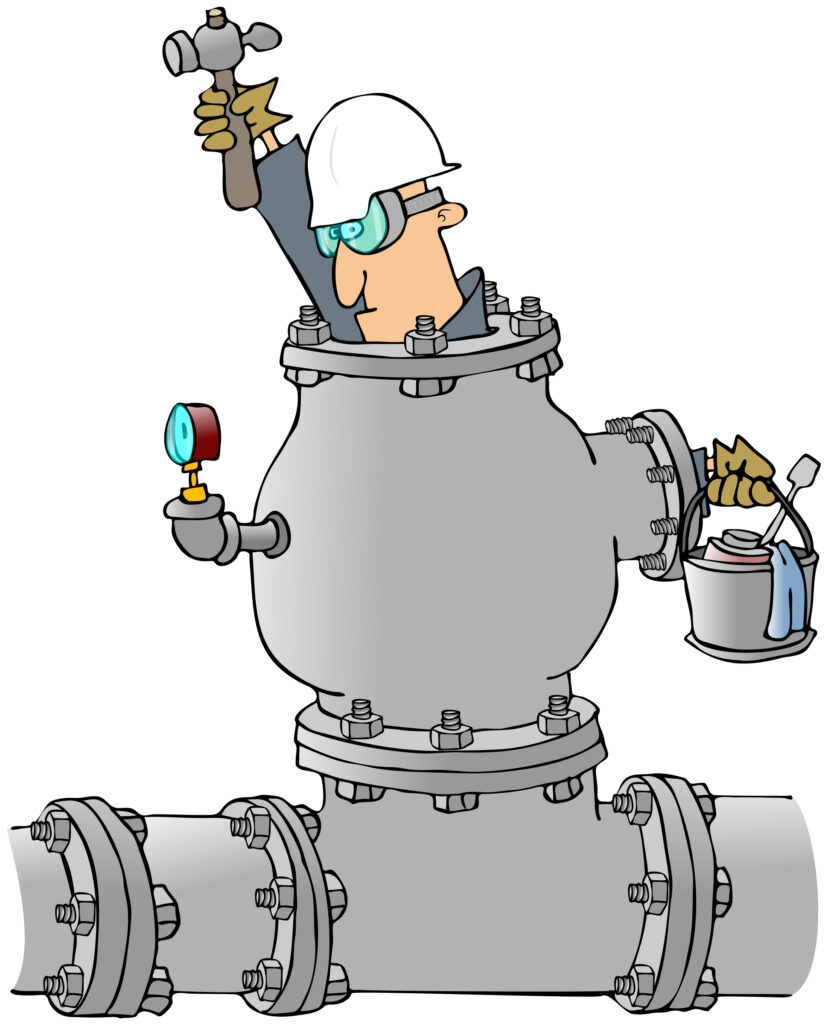
A Natural Gas (Methane)
Pipeline on Wheels




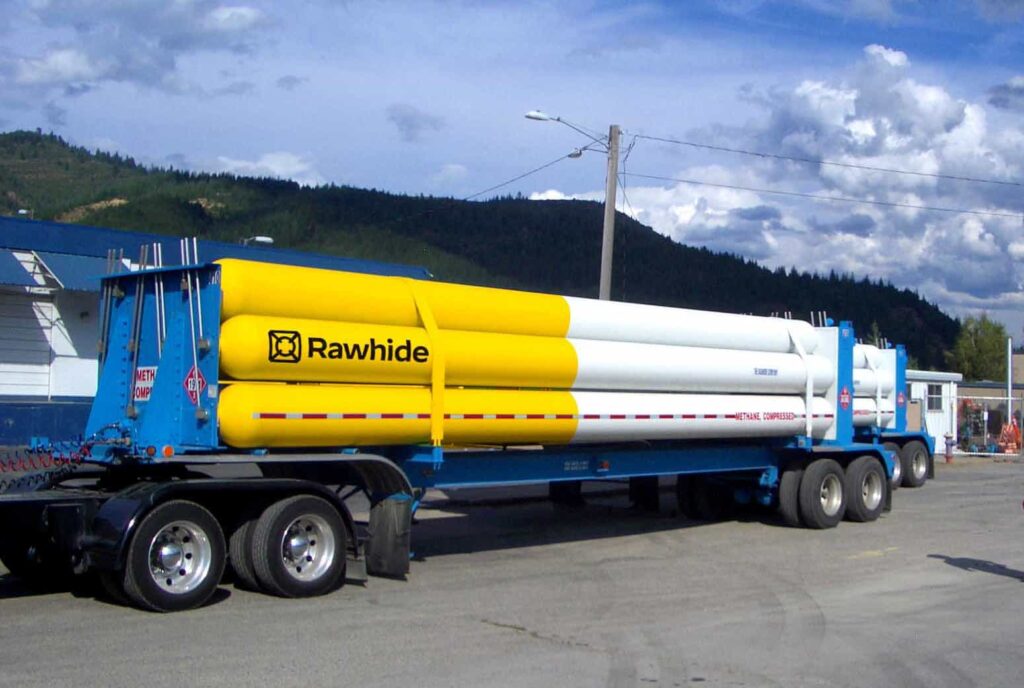
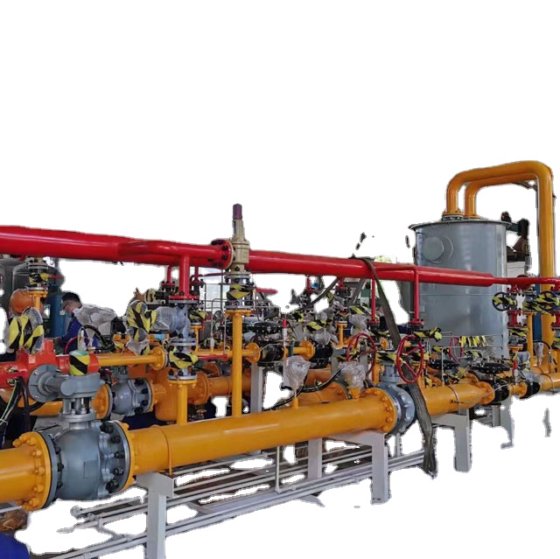
- 7
Here’s the back story. For a variety of geopolitical and environmental reasons which I won’t go into, natural gas companies are having difficulty obtaining gas from the massive natural gas mining plants in Western Canada. Liberty, which I believe is owned by Enbridge, a huge Canadian natural gas conglomerate, is not getting the gas supply it counted on. Frankly, it’s more profitable for Enbridge to ship its gas overseas, especially to China, than to send it to Malone and elsewhere in the Northeast.
So, natural gas companies have come up with a workaround. They call it a virtual pipeline, pipeline on wheels, or mobile pipeline. They shop around for the cheapest natural gas they can buy — these days it tends to be fracked natural gas from Pennsylvania — where the methane is compressed into a much smaller volume, injected into large cylinders, and trucked to the purchaser’s point of injection — in this case, on the Creighton Rd. in Malone. Here the cylinders are hooked up to portable decompression processors on skids, and the gas is restored to its original volume. Whereupon it gets pumped into Liberty’s gas line.
By the way, natural gas companies avoid having to deal with local building permits by trucking in these portable decompression plants—and emphasizing they are on “skids,” another term for a pallet. A skid (pallet) is not considered a “building structure” in their sneaky way of thinking. This is of course an ingenious and diabolical way of circumventing the code officer. I suspect this is exactly the trick they pulled on our unsuspecting code officer, Mike McMahon. Attorney Afzali uses the same tactic in his aggressive and cheeky letter to the town board (see Fig. 1: Harris to Town of Malone).

In the Alice-in-Wonderland language of the industry, Malone is called a gas island or daughter station, with the mother station being the compressor at the other end of the supply chain.
Here is a fanciful image of the whole concept:
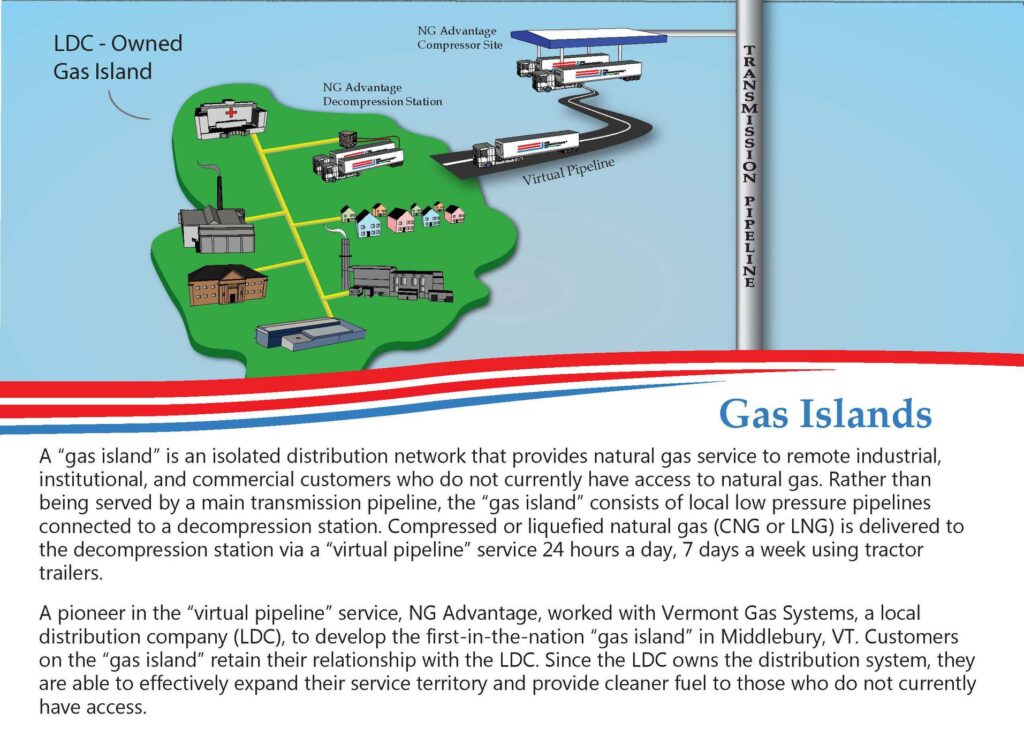
- 8
So, where do the mushroom cloud and the earsplitting BOOM come into the picture? I’m glad you asked. There are two places where a disastrous explosion can easily be triggered.

- 9
One is during the process of injecting the compressed gas (from the cylinders) into the expansion pipes and chambers of the decompressor — yes, on Creighton Road. (The ever-deceptive gas companies call this injection process, “decanting” the gas, which is hilariously misleading.) Just as with an air conditioner, during decompression the gas and everything it comes into contact with becomes extremely cold. To counteract the cold, gas companies add heat to the gas.
It doesn’t take a lot of imagination to realize that if the temperatures, pressures, and flow rates are not precisely calibrated, monitored, and executed, or if there is any kind of spark or flame, the results can be catastrophic. Methane is notoriously combustible, as demonstrated in the science lab video, below.

- 10
In the event of an explosion and fire, the Village of Malone should be evacuated. Of course, just as happened with the East Palestine gas fire in Ohio, state and federal agencies will swear on a stack of Bibles that there’s absolutely no risk of harm to anyone breathing this shit. Anyone who would believe this, is indeed naïve.

- 11
The second and not uncommon instance of explosion is, not surprisingly, in the transport of the CNG (Compressed Natural Gas) cylinders. The trucks carrying the cylinders are widely known as Bomb Trucks. There are many outraged citizen groups in the Northeast who have been fighting state and federal regulatory agencies over these Bomb Trucks traveling the interstates, county highways and roads, and municipal streets. Such, however, is the political bullying of the corporate energy sector that the Federal Energy Regulatory Commission (FERC) and NYS Department of Transportation (DOT) have refused to regulate these vehicles.
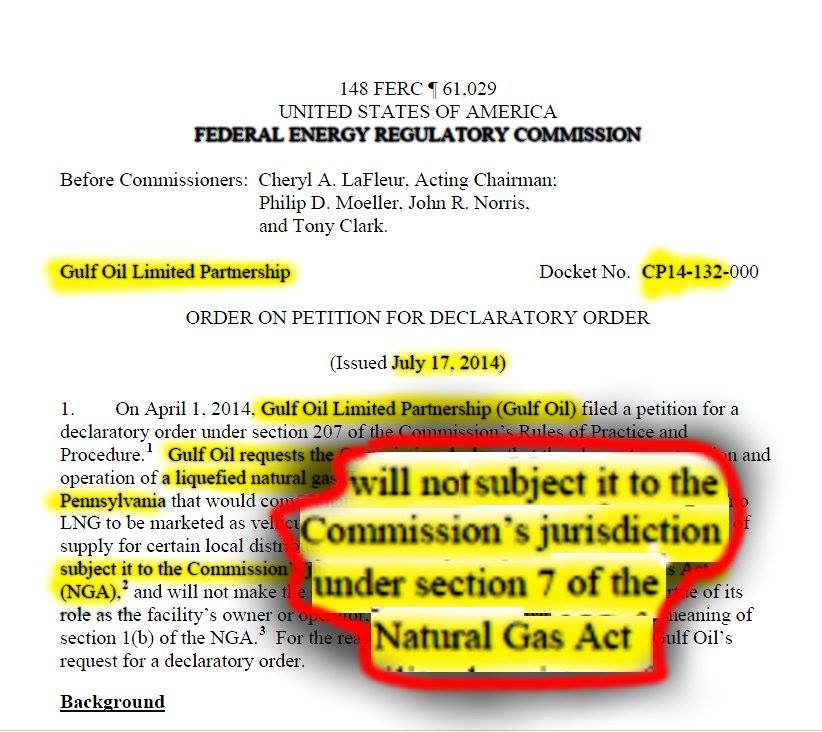
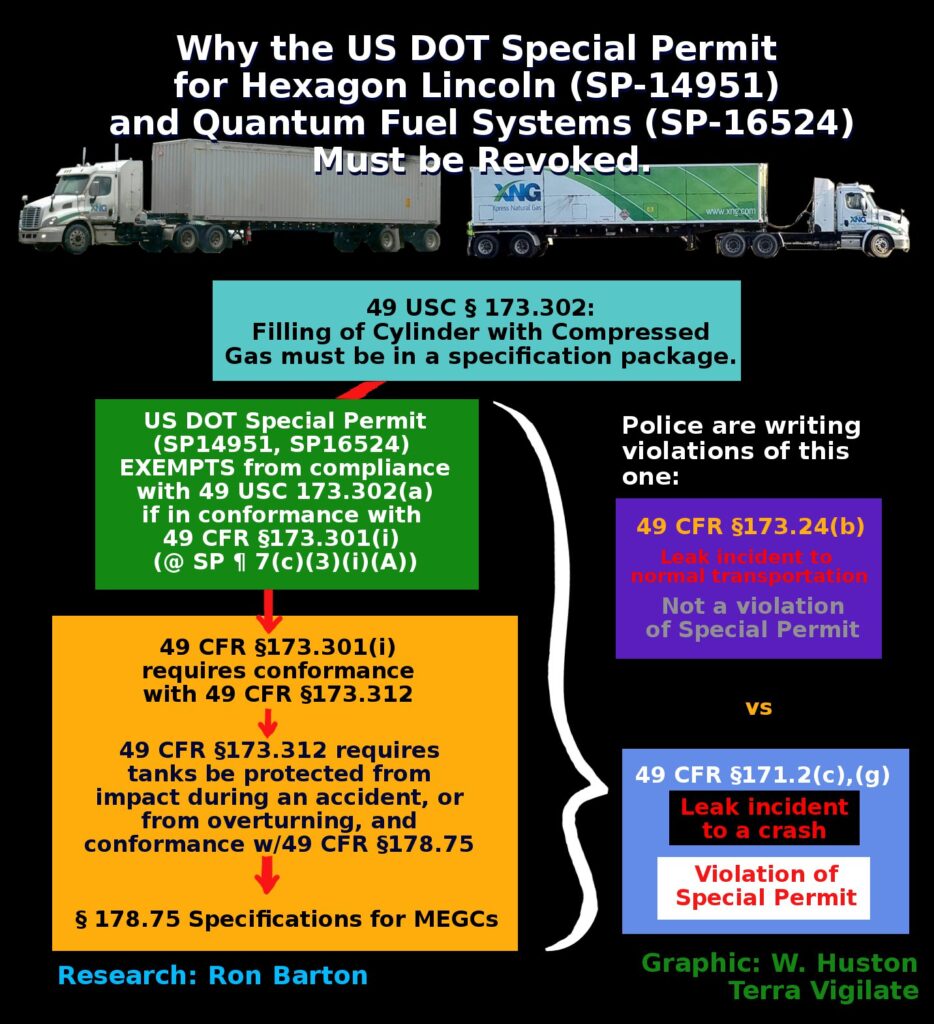
- 12
Under withering public criticism, the natural gas companies have taken to disguising their Bomb Trucks by using unmarked tractor-trailer trucks that look like any other 18-wheeler barreling down the highway. (Cute, huh?)
Oh, the technical name for these Bomb Trucks is “High-Pressure, Bulk-Haul, Type-4 CNG Carbon-Fiber Composite ‘Virtual Pipeline’ Tube Trailer.” You know, just like a hotdog is a “tube steak.”


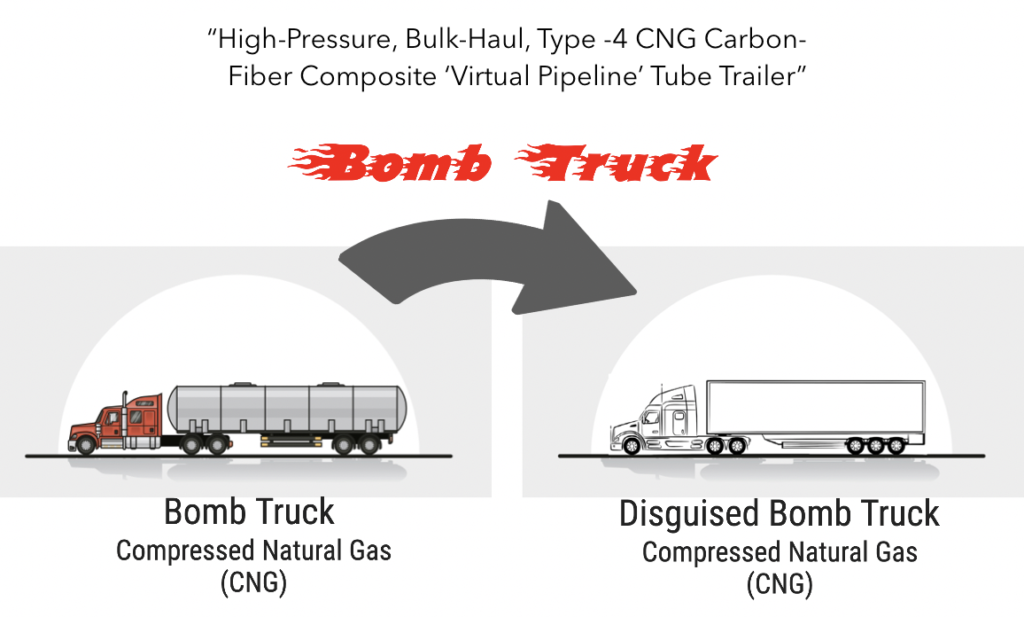
- 13
How many of these Bomb Trucks would arrive at the Creighton Road site daily, at all hours of the day and night? Keep in mind, they would be traveling Route 11 from both the east and west, Route 11B, and possibly through the Adirondack Park.

The answer is: Initially, perhaps not a whole lot. However, over time this could easily increase dramatically. Just like those wind turbines to the east of Malone proliferated beyond anyone’s wildest expectations, so this so-called mobile pipeline can easily do the same.
Make no mistake, the gas industry defines this as a virtual pipeline, which, by definition, means multiple trucks an hour. As in a chain of trucks. (Imagine sausage links. It’s a little far-fetched, but you get the idea.)
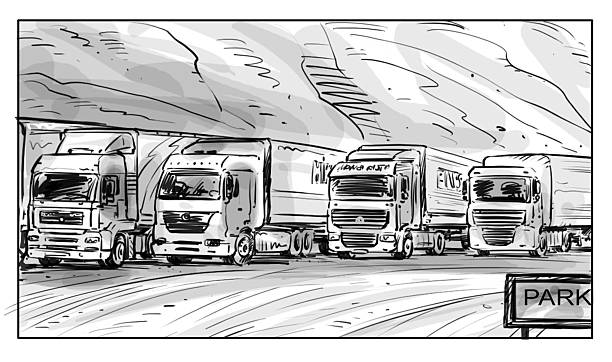

- 14
Here are some images, mostly from downstate, to help you get a handle on all this. At the bottom are several Facebook postings that I screen-grabbed.
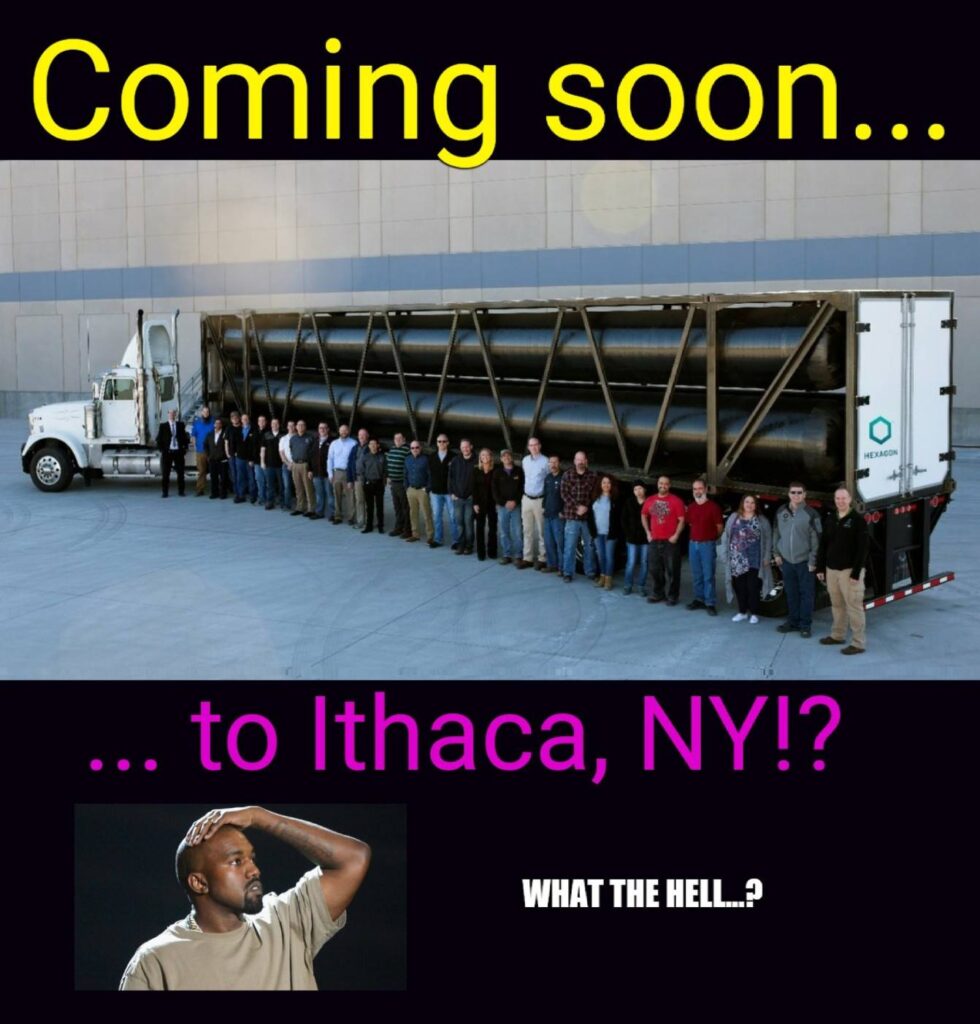
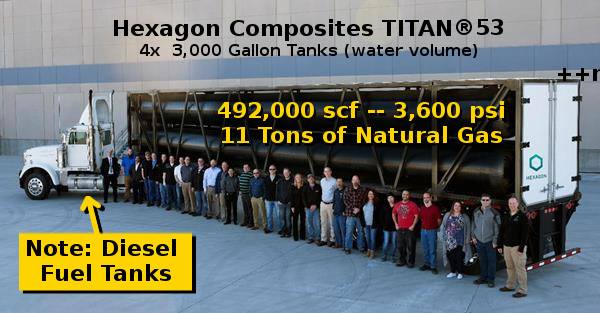

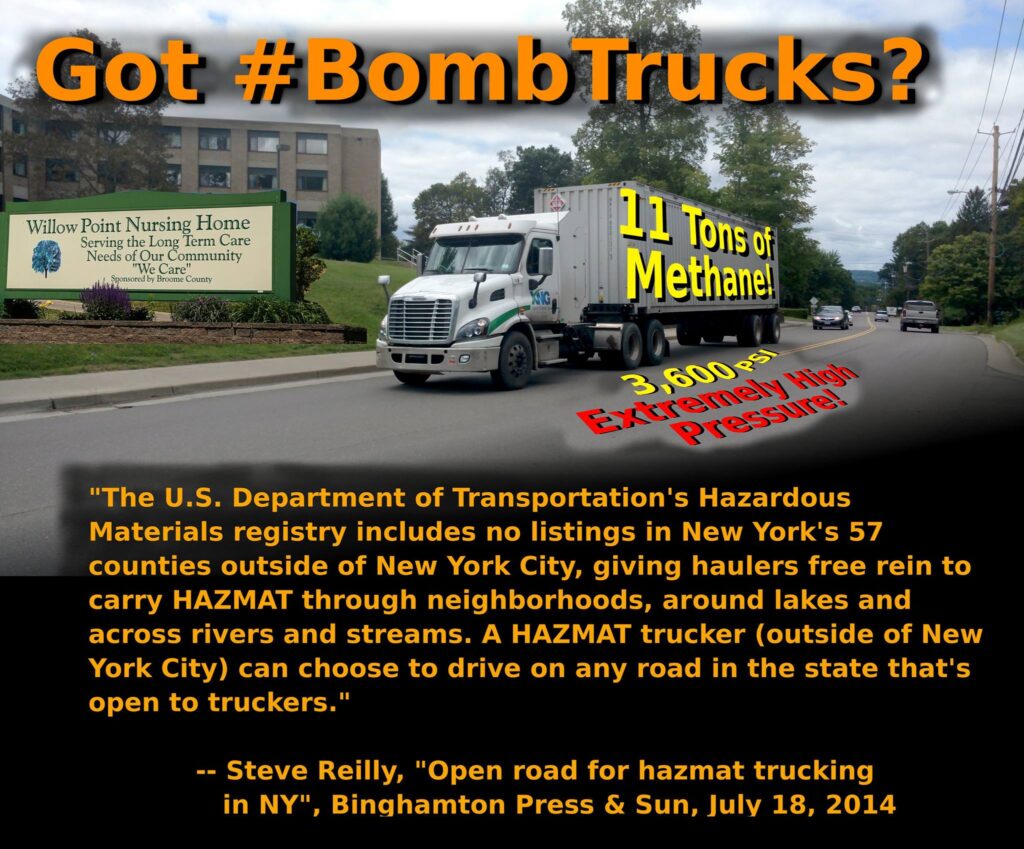
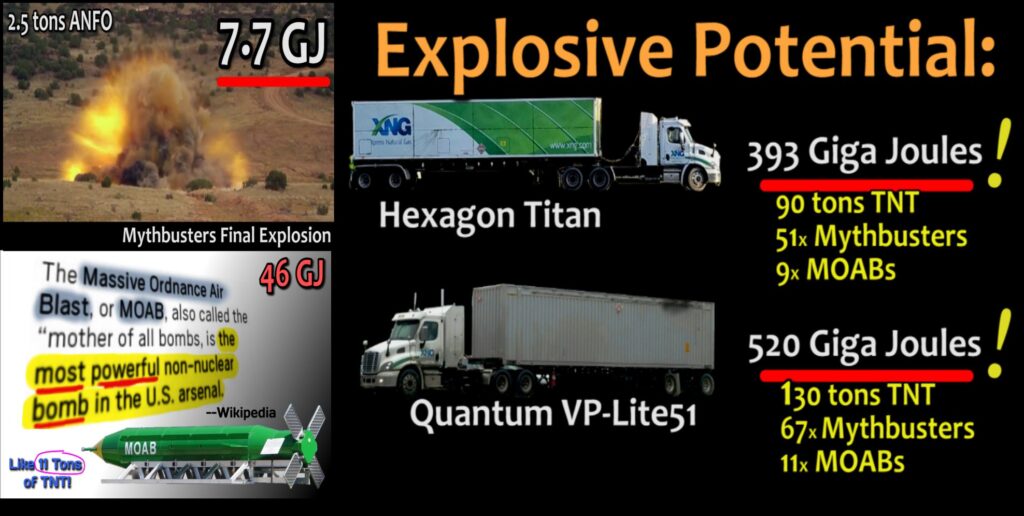

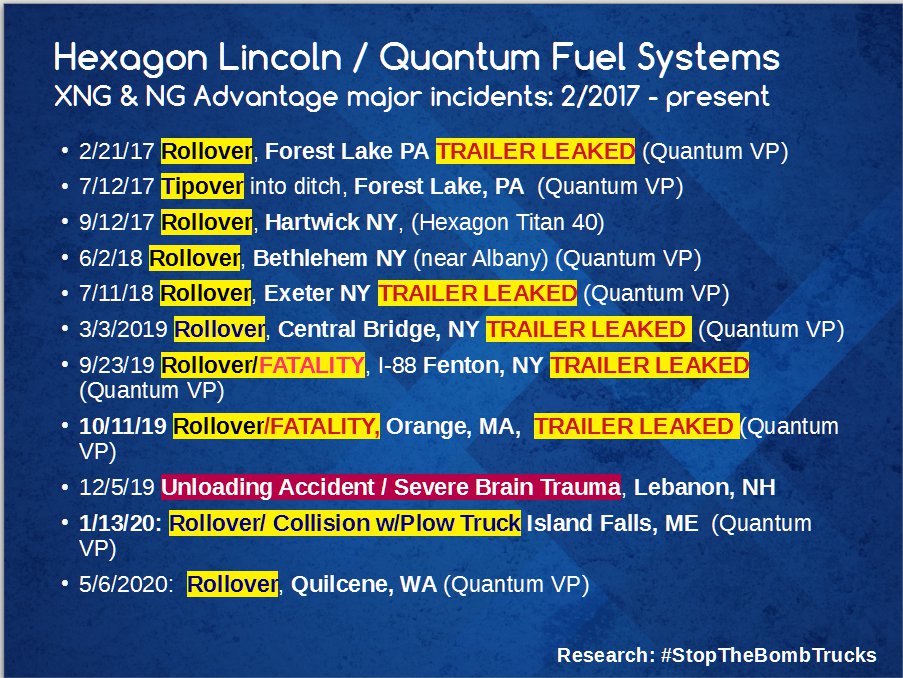
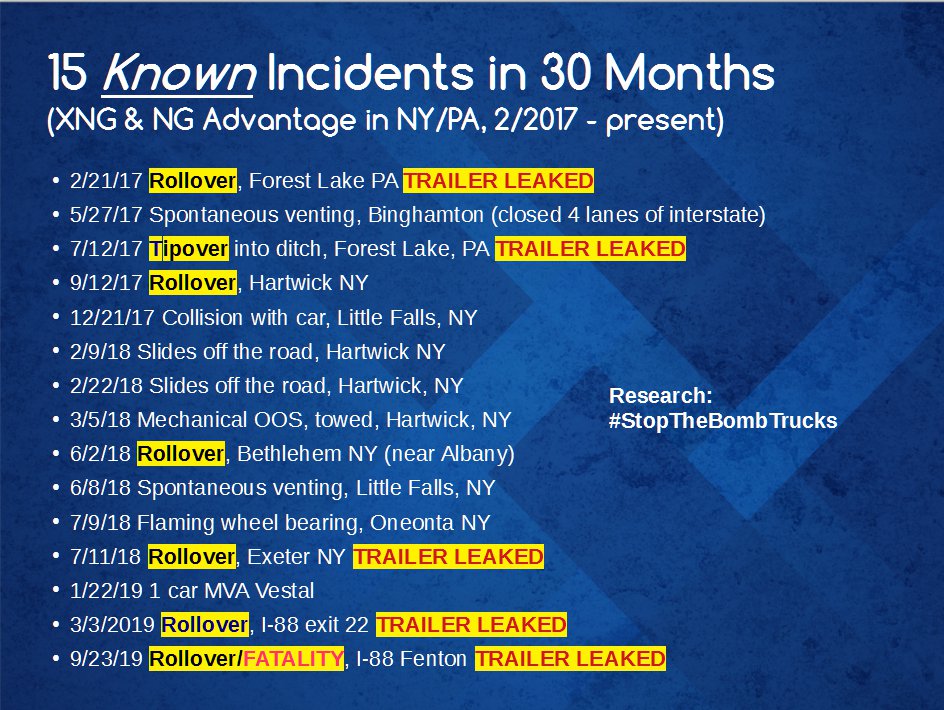





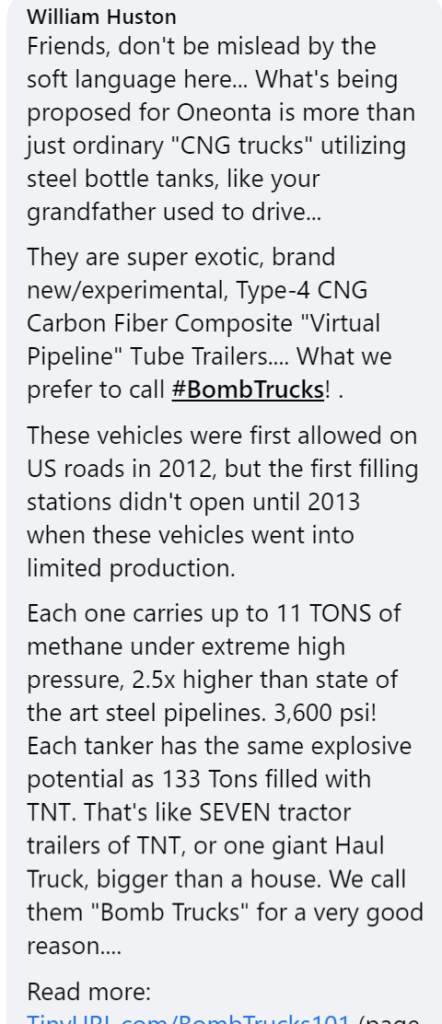
- 15
It’s worth pointing out that in 2017 Liberty Utilities tried to install a CNG decompressor in Keene NH. I have attached the NH Public Utilities Commission report, to the right.
I draw your attention to these two pages from the report, underscoring the less than professional application made by Liberty. (Mouse-over the images to zoom in.)
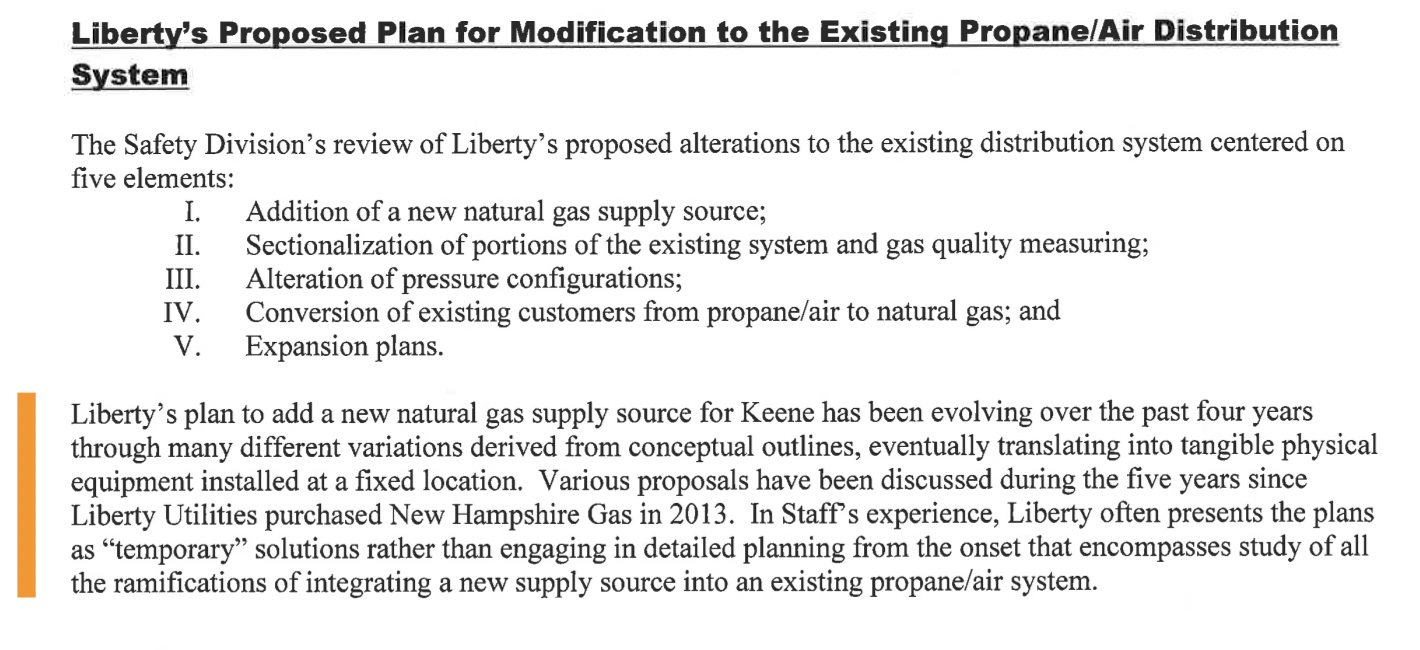
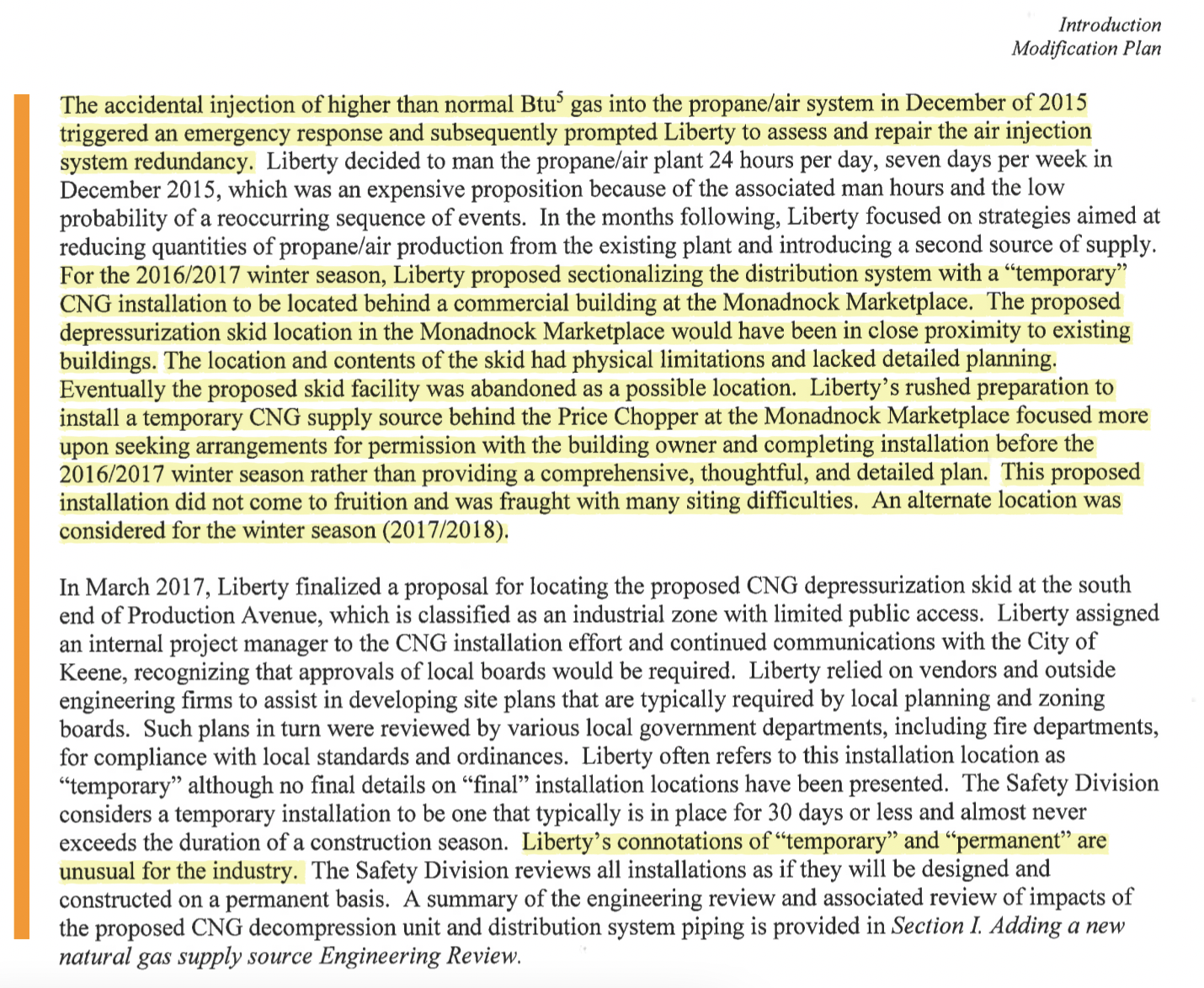
- 16
Click here to read an excellent article on these virtual pipelines, written by a young man who occasionally writes for Rolling Stone.
Winter warning:
Liberty has maneuvered the Town and Village of Malone into an awkward spot. It promised a dependable supply of reasonably priced natural gas (methane). Believing this promise, the Malone Central School District, Alice Hyde Hospital, the Village of Malone Office, a number of businesses on West Main St., and numerous homeowners switched over their fuel service and furnaces to natural gas.
Now is turns out that Liberty may not be able to deliver on its promise. This “virtual pipeline” bullshit is a back-handed confession that Liberty can’t get the gas it told us it could, via a network of pipelines. Oh yes, the pipelines are in place, but the supplier is sending its methane (Liquid Natural Gas) elsewhere, to more lucrative markets than here.
In other words, Liberty’s gas source is bailing out. Perhaps not entirely bailing out, but it’s turning down the spigot. Liberty, like loads of other LNG companies in the Northeast, is being forced to buy fracked LNG from, mostly, fracking sites in Pennsylvania and perhaps Oklahoma and Texas.
It’s obvious that this LNG-on-wheels stunt is going to raise the cost of LNG for Malone Central Schools and all the other customers whom Liberty signed on.
There is another side to this coin. If the Town of Malone denies Liberty permission to set up this CNG decompression plant, don’t be surprised if Liberty responds with, “Hey guys! We may not be able to furnish our customers with enough fuel this winter!”

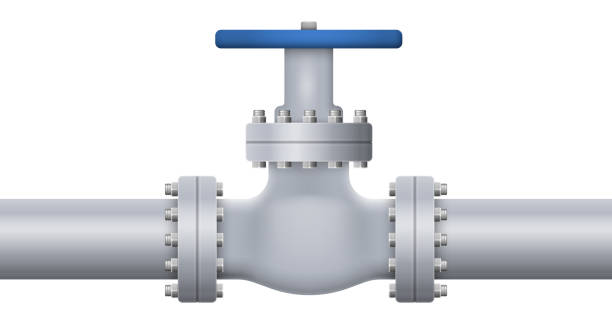


Thanks for screwing us!"
How cool are you with all this?


